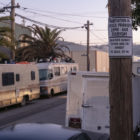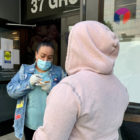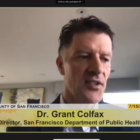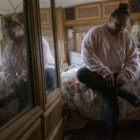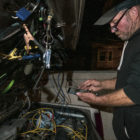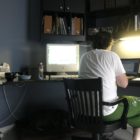Homelessness
Photojournalist Documents Vehicle Dweller Communities While Living in RV
In the reporting series “Driving Home: Surviving the Housing Crisis,” photojournalist Yesica Prado documents life on four wheels in Berkeley and San Francisco. The project, in partnership with CatchLight Local, offers an intimate look at what it really means for home to be a vehicle in the Bay Area, whether it’s an RV with lots of space and utilities or a sedan with neither. But with housing out of reach, for many, a tent is the only other option. Prado, who was and is part of one of the vehicle dweller communities she documented, said that vehicle living comes with the daily task of avoiding parking or law enforcement and securing access to basic needs like hygiene, food and water. “People are definitely stuck in a cycle that you can’t escape.
